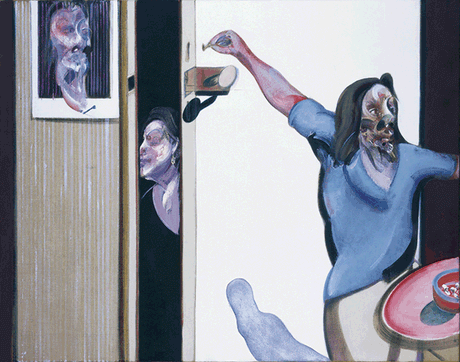
The National Portrait Gallery’s (NPG) first Francis Bacon exhibition is an overdue acknowledgement of one of the 20th century’s foremost figurative artists. “[The show] has been on the cards for a while,” says the curator Rosie Broadley, “but we wanted to reserve it until after the reopening of the gallery [in 2023], and then make a real splash with a major British artist.”
Beginning with the anonymous, screaming heads painted in the 1940s, Bacon’s radical reappraisal of portraiture in the post-war world has typically placed the artist beyond the NPG’s remit, with the result that he is not represented in the permanent collection.
“The people he paints are not the people who fit the Portrait Gallery’s collecting criteria,” Broadley says. “George Dyer [Bacon’s lover in the 1960s], for example, is not someone who has made a significant contribution to British history or culture.”
With more than 50 paintings organised chronologically and thematically, Francis Bacon: Human Presence charts the artist’s increasingly personal focus and how his relationships with friends and lovers coincided with key developments in his work. A section dedicated to Dyer will include one of the “black triptychs” made after his death in 1971. “Something that sets Bacon apart from more traditional portraitists is that he paints people after they had died,” Broadley says. “He paints George in the throes of his suicide, but he does it in this incredibly Old Master way, and elevates a sordid situation to the highest manner of painting.”
Bacon is best known for portraits of men, but the painter Isabel Rawsthorne, another of his Soho coterie, emerges as a key sitter. Three Studies of Isabel Rawsthorne (1967), on loan from the Nationalgalerie in Berlin, “is one of his more complicated compositions”, Broadley says. “In it he is thinking about reproduction, and revisiting versions of a person that he’s made in a [previous] portrait.”
It was through reproductions that Bacon knew Velázquez’s Pope Innocent X (1649) and Van Gogh’s The Painter on the Road to Tarascon (1888). Key to his anti-illustration project, to capture “all the pulsations of a person”, was Rembrandt’s Self Portrait with Beret (1659), which he studied in person. It will be included, next to Bacon’s own work, highlighting their shared interest in self-portraiture.
Bacon was himself a willing subject who loved having his photograph taken, evidenced by the NPG’s Photography Collection, which includes portraits of him by Cecil Beaton, Bill Brandt and Arnold Newman. “I hope this exhibition returns a bit of warmth to the topic,” Broadley says. “Bacon was sensitive and passionate and loving but also sometimes vicious and angry. Emotion is so important in his work and sometimes in intellectualising it, it loses something.”
• Francis Bacon: Human Presence, National Portrait Gallery, 10 October-
19 January 2025


